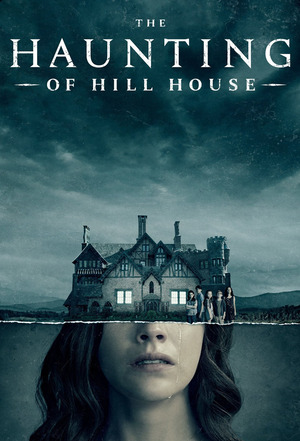
Created by: Mike Flanagan
Starring: Victoria Pedretti, Michiel Huisman, Elizabeth Reaser, Oliver Jackson-Cohen, Carla Gugino, Timothy Hutton, Henry Thomas
🏚️ Episode 1: Steven Sees a Ghost
The Crain family — Hugh and Olivia, and their five children — move into Hill House to renovate and sell it. But the house is more than old wood and creaky doors; it holds secrets and haunts that awaken trauma. In the present timeline, Steven, the eldest son and now a best-selling author, denies the supernatural events he once experienced. But when tragedy strikes, he's pulled back into the nightmare.
🌙 Episode 2: Open Casket
Shirley, now a mortician, copes with death through control. We witness her childhood experiences of witnessing corpses and her desperate attempts to rationalize the horror around her. Her adult skepticism hides deep fractures beneath the surface — grief masked as professionalism. The return of Nell’s body ignites suppressed fear.
🌌 Episode 3: Touch
Theodora's episode highlights her psychic sensitivity, triggered by physical contact. As a child, she sensed secrets hidden in the house. Now a child psychologist, Theo uses gloves to avoid emotional overload. This chapter peels back her stoicism, showing the lingering scars from a house that knew how to wound people invisibly.
🪞 Episode 4: The Twin Thing
Luke and Nell, the youngest twins, share a deep connection. Luke's battle with addiction and homelessness mirrors his inner torment. Haunted by a ghostly figure with a bowler hat, his descent is emotional, not just supernatural. Luke’s pain is real — physical and psychic — and the house looms large in his backstory, whispering through withdrawal.
👻 Episode 5: The Bent-Neck Lady
This is the emotional core of the series. Nell’s lifelong fear of the "Bent-Neck Lady" climaxes in a terrifying, heart-wrenching twist: she was haunting herself all along. Her suicide — a broken loop in time — reframes everything we’ve seen so far. Trauma doesn't just scar — it distorts memory, folds time, and becomes a ghost.
🏠 Episode 6: Two Storms
A technical and narrative marvel, this episode is filmed with long, unbroken takes. It seamlessly jumps between past and present, between funeral parlor and Hill House. Family tension simmers. Grief speaks in silences. Ghosts flicker at the edges of frames — literal and emotional. It’s about storms: in the house, in the mind, and in family.
🔦 Episode 7: Eulogy
We dive deeper into Hugh’s past. As he’s questioned about Olivia’s death and the mysterious night that shattered their lives, secrets begin to emerge. Hugh sees ghosts, but more crucially, he sees what denial costs — his children’s sanity. His conversations with a younger version of himself represent memory wrestling with truth.
🕯️ Episode 8: Witness Marks
The Crain siblings begin confronting the past head-on. More memories surface — of the night Olivia lost her grip on reality, of supernatural whispers driving her toward "forever house" dreams. The house becomes more than a place — it’s a character, feeding off the fragile minds it traps inside.
🪦 Episode 9: Screaming Meemies
Olivia’s episode. We see how her mental unraveling was fed by the house’s energy. Dreams, reality, and delusion blur. She tries to protect her children — by removing them from the world. It’s tragic, beautiful, horrifying. Carla Gugino’s performance turns Olivia into a ghost before she dies — her mind the first victim.
🚪 Episode 10: Silence Lay Steadily
The surviving siblings return to Hill House. Time collapses as they each confront personal ghosts and unresolved guilt. The Red Room, always locked, is revealed to have been many rooms — adapting to their subconscious desires. The house, like trauma, morphs to fit memory. The series ends with a note of bittersweet peace — not all scars heal, but they can be faced.
🧠 Symbolism & Themes
- Memory: Hill House isn’t just haunted by ghosts but by distorted recollections — past events replayed until they’re unrecognizable.
- Grief & Trauma: Every ghost represents loss, pain, or denial. The haunting is as psychological as it is paranormal.
- Family: The Crains aren’t just fighting a house — they’re struggling to stay connected amid years of silence, secrets, and shame.
- The House: An architectural metaphor for the subconscious — its layout unknowable, its doors traps, its windows false escapes.
🎯 Final Thoughts
The Haunting of Hill House is more than horror — it’s poetic grief, written in ghost stories. Mike Flanagan’s adaptation transforms Shirley Jackson’s premise into a meditation on mental health, memory, and the inescapable bonds of family. It’s a show where every jump scare hides emotional weight — and where catharsis arrives not through exorcism, but through truth.
We carry our ghosts with us. Some follow. Some whisper. Some only appear when we finally dare to look.